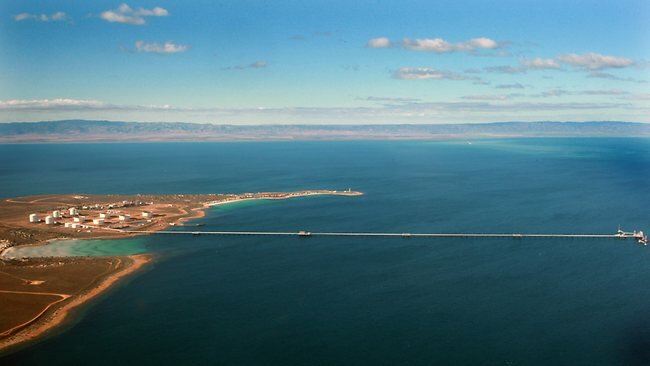|
What is hydrogen?
Sitting pretty in position one on the periodic table, hydrogen (H2) is the simplest and most common element in the universe. On earth, it is most commonly found in molecular forms such as water, biomass, fossil fuels and mineral compounds. It is colourless, odourless, non-toxic and highly combustible. Hydrogen has been classified into colours related to the greenhouse gas emission profile of the energy source or process used to generate or extract hydrogen, forming a hydrogen rainbow. 'Green hydrogen' is when hydrogen is produced by splitting water via electrolysis powered by renewable energy, resulting in a zero-carbon fuel. 'Brown hydrogen' is when hydrogen is produced through thermochemical reactions using coal and 'blue hydrogen' is when natural gas is split into hydrogen and CO₂ either by a process known as 'steam methane reforming' or 'auto thermal reforming' but the CO₂ is captured and permanently stored, through Carbon Capture and Storage (CCS) technologies. 'Gold' or 'white hydrogen' is hydrogen that occurs naturally, generated by geological processes, and offers significant cost and emissions advantages relative to other means of hydrogen production. It’s the poster child of the new economy. But hydrogen also has a long history. This gas powered the first engines more than 200 years ago. It’s now critical for refining petroleum, treating metals and manufacturing fertilisers. You’ll even find it behind margarine and butter. Its production has traditionally relied on natural gas and coal. But solar and wind can supply the electricity needed to split water into the gas. And this clean energy can power foundries and turbines. It also drives fuel cells with three times the efficiency of internal combustion engines. And, believe it or not, natural hydrogen deposits can be found in underground reservoirs - just like hydrocarbon gas. How is it used?
The main use of hydrogen in Australia is as a raw material for industrial processes. Hydrogen can also be used like natural gas to heat and power homes, to power fuel cell electric cars and trucks, buses and trains, and to make electricity (through fuel cells or being burned to drive turbines). Did you know? Liquid hydrogen has been used by NASA since the 1940's and is the fuel of choice for the space shuttle programme. Is hydrogen produced in South Australia? Green hydrogen is currently being produced at Hydrogen Park South Australia (HyP SA), located at Tonsley Innovation District. HyP SA is home to Australia’s largest hydrogen electrolyser (1.25 megawatts) and is owned and run by Australian Gas Infrastructure Group (AGIG). A blend of 5% renewable hydrogen and natural gas is being supplied to 700 domestic consumers in Mitchell Park. From 2021, AGIG began supplying industry with renewable hydrogen from its tube trailer refuelling station at Tonsley, replacing hydrogen deliveries from Victoria, and saving 120,000 kg of carbon emissions each year. The South Australian Government is currently supporting several large-scale hydrogen projects under development, including the Hydrogen Utility’s (H2U) Eyre Peninsula Gateway Project located at Cultana and Neoen Australia’s Hydrogen Superhub, Trafigura Group’s Green Hydrogen Project at Port Pirie and South Australia’s Hydrogen Jobs Plan. South Australia is also the only Australian jurisdiction currently with a licensing regime in place and favourable geology which could potentially generate 'natural hydrogen'. H2Ex is actively exploring for natural hydrogen in South Australia and has an exploration license on the Eyre Peninsula. The company is partnering with the University of Adelaide, The Australian National University and Black & Veatch to accelerate the exploration and extraction of natural hydrogen. The research will provide a clear pathway to drill and extract the lowest cost hydrogen, which is expected to be up to 75% cheaper than manufacturing hydrogen. |


